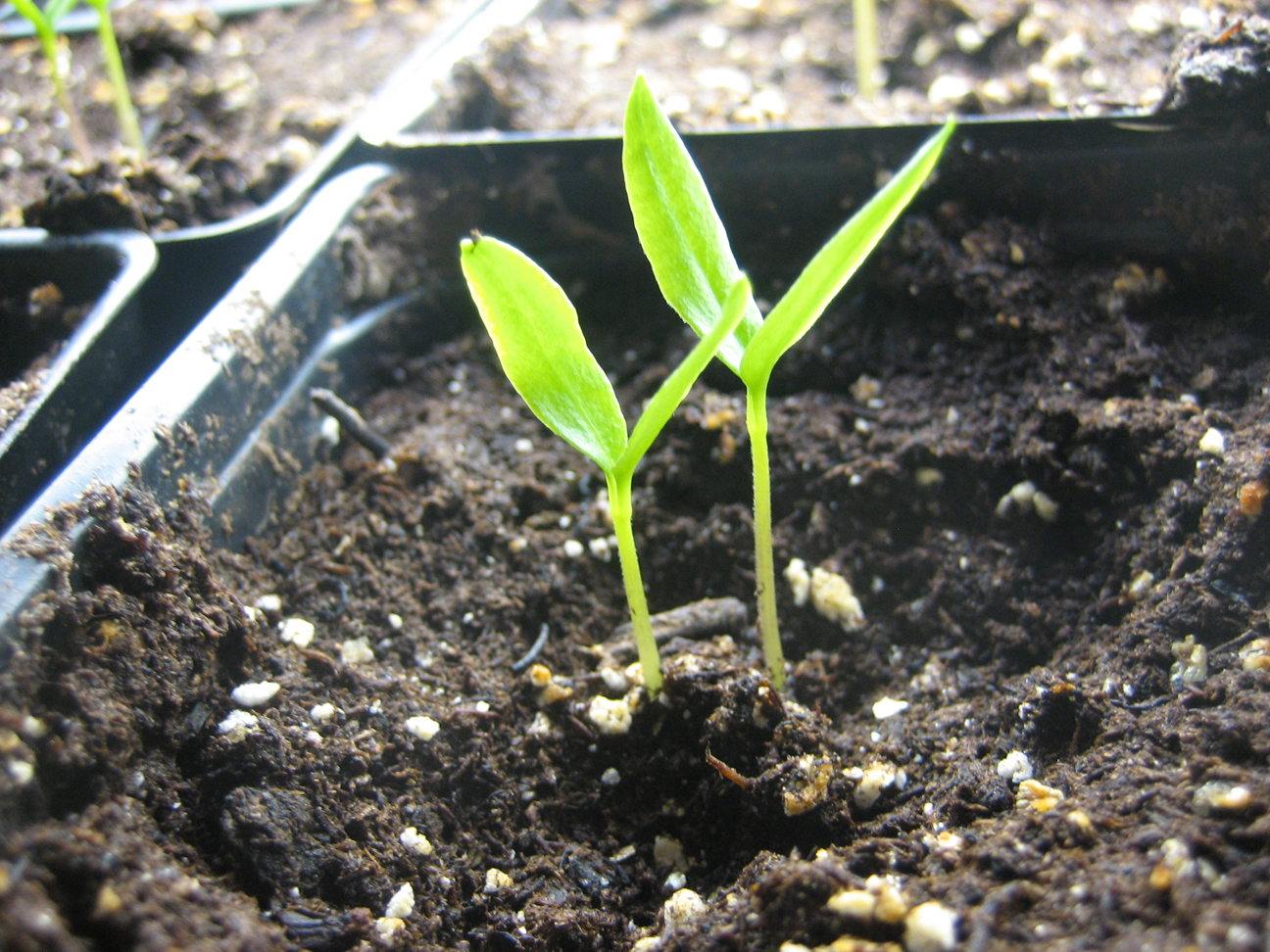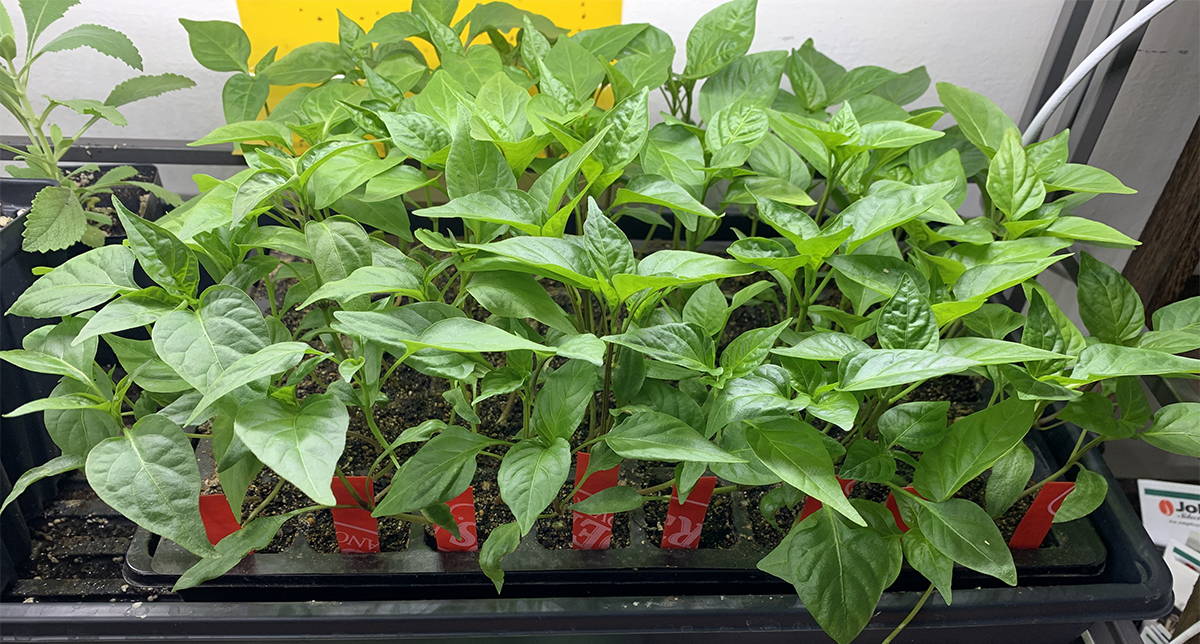
In hot weather you may find you need to water daily. Water plants often in dry weather so the foliage doesn’t wilt, as this can cause undue stress and potential problems such as blossom end rot or leaf curl. Once they start producing flower buds feed plants regularly with a liquid feed high in potassium, such as a tomato fertilizer. This creates a bushier habit and healthier plants with the knock on effect of more flowers and fruits. Pinch out the growing point at the top once plants reach about 8in (20cm) to stimulate plants to produce more branches. Keep plants upright and encourage more reliable growth by pushing in a cane or stake next to each plant then tying the main stem to it with twine. Peppers grow well in containers Growing Peppers Plants may also be grown on a bright, sunny windowsill. In cooler, temperate climates peppers will come into flower far quicker if they are grown on with the added protection of a greenhouse, hoop house or sun room. This will help to avoid runoff every time you water. Use good-quality potting soil enriched with added organic matter and plant the young peppers so that the soil surface reaches just shy of the rim. You can also plant into containers that are at least 1.5 gallons (6 liters) in volume. Set plants a minimum of 16in (40cm) apart. Plant peppers directly into open ground that’s been improved with plenty of organic matter, such as garden compost. Take care that a late frost doesn’t accidentally damage them! Plant out once your last expected frost date has passed.

Acclimatize plants before setting them outside by leaving them out somewhere sheltered for gradually longer timespans over a two-week period.
PEPPER PLANT SEEDLINGS FULL
Peppers love sunshine, so reserve them a place in full sun where they will get at least six hours of direct sunshine every day. Keep potting young peppers on as required Planting Peppers If you have grow lights, these will help give the seedlings a strong start while days are still short.Ĭontinue growing, potting the young plants on again if the roots fill their pots before they are ready for planting. Do this while they’re still fairly small yet big enough to handle, and always hold seedlings by their leaves, not their delicate stems. After a few weeks carefully transfer seedlings to their own pots. Once the seedlings emerge, remove covers then grow on somewhere warm and bright.

Alternatively, secure clear plastic bags over your pots using a rubber band then move them to a warm windowsill to germinate. Seedlings appear quickly when pots or trays are placed onto a heat mat or into a heated propagator set to around 70✯ (21✬). You might want to wear gloves if handling seeds from especially hot varieties – and, please, take care not to rub your eyes after touching them! Water the seeds in using a fine spray. Space seeds at least an inch (2.5cm) apart across the surface then cover with a little more mix. Sow into pots or plug trays of seed-starting mix.

Sow seeds in late winter or early spring, no more than two months before your last frost date. Warmth is especially important for germination and then to encourage strong growth of the seedlings, so they will need to be started indoors or under cover in most climates. Peppers need warmth and sunshine to thrive.


 0 kommentar(er)
0 kommentar(er)
